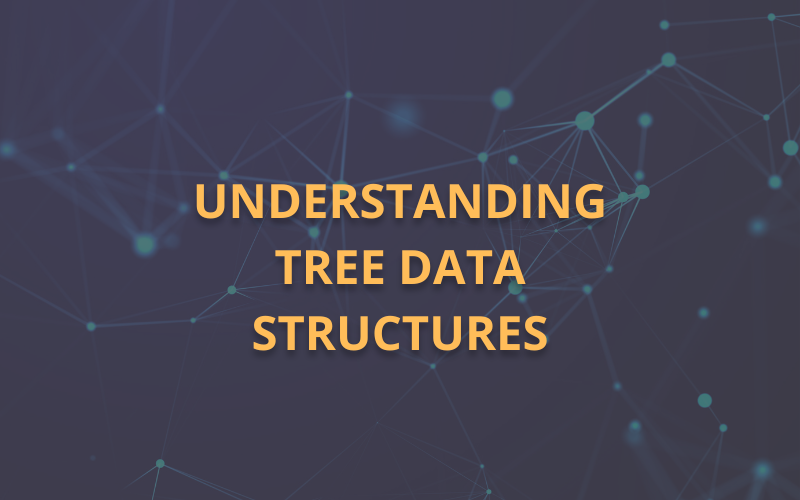Summary: Tree data structure are essential for organizing hierarchical data efficiently. This article covers various types of trees, including binary trees, AVL trees, and B-trees, along with their properties and applications in fields like databases, file systems, and artificial intelligence. Understanding trees is crucial for optimizing data management and retrieval.
Tree data structures are fundamental components in computer science, providing a hierarchical means of organising and managing data. Unlike linear data structures such as arrays and linked lists, trees enable a more complex relationship between data points, allowing for efficient data retrieval and manipulation.
Key Takeaways
- Tree data structures provide a hierarchical organization for efficient data management.
- Binary search trees enable quick search, insert, and delete operations.
- AVL trees maintain balance for optimal performance in dynamic datasets.
- B-trees are ideal for indexing in databases with large volumes of data.
- Trees are widely used in applications like compilers and networking protocols.
What is a Tree Data Structure?
A tree is defined as a non-linear data structure consisting of nodes connected by edges. The topmost node is referred to as the root, while nodes without children are known as leaf nodes. Each node can have zero or more child nodes, creating a branching structure that resembles an inverted tree.
This hierarchical organisation facilitates various operations, including searching, inserting, and deleting data.
Key Terminologies in Tree Data Structures
Understanding tree data structures requires familiarity with several key terms:
- Node: The fundamental unit of a tree that contains data and links to its child nodes.
- Edge: The connection between two nodes.
- Root: The topmost node in the tree.
- Leaf Node: A node that does not have any children.
- Internal Node: A node that has at least one child.
- Depth: The number of edges from the root to a specific node.
- Height: The number of edges on the longest path from a node to a leaf.
- Degree: The number of children a node has.
Properties of Tree Data Structures
Tree data structures are essential in computer science for organizing and managing hierarchical data. They offer various properties that make them efficient and versatile for numerous applications. Understanding these properties is crucial for leveraging trees effectively in data management, algorithms, and system design.
Hierarchical Structure
A tree is inherently hierarchical, consisting of nodes connected by edges. The topmost node is known as the root, and it can have multiple child nodes, forming a parent-child relationship. This structure allows for a clear representation of relationships among data elements, making it easier to navigate and manipulate.
Recursive Nature
Trees are recursive data structures, meaning that each subtree can be treated as a smaller tree. This recursive property simplifies many operations, such as traversal, insertion, and deletion, as the same algorithms can be applied at different levels of the tree.
Unique Paths
In a tree, there is exactly one path between any two nodes. This unique path characteristic ensures that operations like searching for a node or traversing the tree are straightforward and efficient, as there are no cycles or ambiguities in navigation.
Depth and Height
Depth: The depth of a node is defined as the length of the path from the root to that node. It indicates how far down the tree a particular node is located.
Height: The height of a node is the length of the longest path from that node to any leaf node in its subtree. The height of the entire tree is determined by the height of its root node23.
Degree of Nodes
The degree of a node refers to the number of children it has. A leaf node, which has no children, has a degree of zero, while internal nodes can have varying degrees depending on how many child nodes they possess
Types of Tree Data Structures
Tree data structures are crucial in computer science for organising data hierarchically. They come in various forms, each designed to meet specific requirements and functionalities. Below is an overview of the most common types of tree data structures.
Binary Tree
It is where each node has at most two children, commonly referred to as the left and right child. This structure forms the basis for many other tree types.
Types of Binary Trees:
- Full Binary Tree: Every node has either 0 or 2 children.
- Complete Binary Tree: All levels are fully filled except possibly for the last level, which is filled from left to right.
- Perfect Binary Tree: All internal nodes have two children, and all leaf nodes are at the same level.
- Balanced Binary Tree: The height difference between the left and right subtrees is minimal, ensuring efficient operations.
Binary Search Tree (BST)
A binary search tree is a specialized binary tree that maintains sorted order. For any given node:
- The left subtree contains only nodes with keys less than the node’s key.
- The right subtree contains only nodes with keys greater than the node’s key.
This property allows for efficient searching, insertion, and deletion operations.
AVL Tree
It is a self-balancing binary search tree where the heights of the two child subtrees of any node differ by no more than one. This balancing ensures that operations remain efficient, typically O(logn)O(logn).
Red-Black Tree
A red-black tree is another type of self-balancing binary search tree. Each node contains an additional bit for color (red or black), which helps maintain balance during insertions and deletions. The following properties define a red-black tree:
- The root is always black.
- Red nodes cannot have red parents or children.
- Every path from a node to its descendant leaf nodes must have the same number of black nodes.
N-ary Tree
It is a generalization of a binary tree where each node can have up to NN children. This structure is useful for representing hierarchical data where the number of children per node varies widely.
Ternary Tree
A ternary tree is a specific type of N-ary tree where each node can have at most three children, often referred to as left, middle, and right child. Ternary trees can be used in applications such as decision-making processes.
Segment Tree
It is used for storing intervals or segments and allows querying which segments overlap with a given point efficiently. It supports dynamic updates and queries in logarithmic time.
Applications of Tree Data Structures
Tree data structures are fundamental in computer science, providing a versatile framework for organizing and managing data efficiently. Their hierarchical nature allows for various applications across multiple domains. Below are some key applications of tree data structures:
File Systems
Trees are extensively used to manage file systems, where directories and subdirectories are structured as a hierarchy. The root node represents the main directory, while child nodes represent subdirectories and files. This structure allows for efficient navigation, searching, and management of files, enabling users to easily locate, move, rename, or delete files as needed.
Databases
In databases, tree structures such as B-trees and B+ trees are employed for indexing purposes. These trees optimize search, insert, and delete operations, significantly improving performance when handling large datasets. The hierarchical organization allows for quick access to records, making databases more efficient for data retrieval.
Compiler Design
Trees play a crucial role in compiler design through the use of Abstract Syntax Trees (ASTs). ASTs represent the structure of source code in a hierarchical format, aiding in parsing and code generation processes. This representation helps compilers understand the syntax and semantics of programming languages, facilitating efficient code translation and optimization.
Networking
In networking, tree structures are used in routing protocols like Spanning Trees. These trees help minimize loops in network paths, ensuring efficient data transmission across networks. By establishing a loop-free logical topology, spanning trees enhance the reliability and performance of network communications.
Artificial Intelligence
Trees are widely used in Artificial Intelligence applications, particularly in decision-making algorithms. Decision Trees provide a framework for making decisions based on data attributes, while Game Trees evaluate possible moves in strategy games like chess or checkers. These structures allow AI systems to simulate scenarios and make informed choices based on potential outcomes.
Conclusion
Tree data structures play an essential role in computer science by providing an efficient means of organizing hierarchical data. Their versatility allows them to be applied across various fields, including databases, file systems, and artificial intelligence. Understanding their properties, types, and traversal techniques is crucial for leveraging their full potential.
Frequently Asked Questions
What Is a Tree Data Structure?
A tree data structure is a non-linear hierarchical model consisting of nodes connected by edges. It starts with a root node and branches out into child nodes, allowing efficient organization and retrieval of data.
What Are Some Common Types of Trees?
Common types include binary trees (with at most two children), binary search trees (sorted), AVL trees (self-balancing), B-Trees (for databases), and tries (for storing strings).
How Do You Traverse a Tree?
Tree traversal can be done using three main methods: inorder (left-root-right), preorder (root-left-right), and postorder (left-right-root). Each method serves different purposes depending on the desired outcome during traversal.




